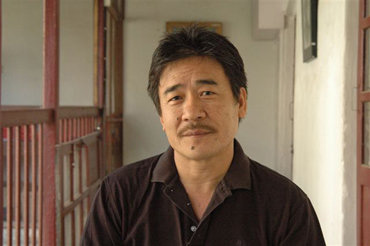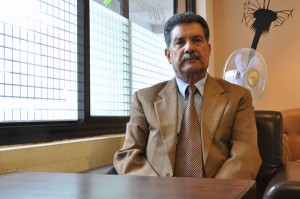Established in the mid 2008, Silence Entertainment has already put its mark in the Nepali local scene. Organizing their yearly ‘Silence Festival’ the event has become popular among the youths of our country. The second edition of the event will take place on October 15 at the Jawalakhel Football ground. By opening up our scene to bands like Vader, Silence Entertainment has revolutionized the local scene today. We got a chance to take a brief interview with the founder/owner of ‘Silence Entertainment’, Mr. Bikrant Shrestha.
 How and when did the idea of establishing ‘Silence Entertainment’ come to your mind?
How and when did the idea of establishing ‘Silence Entertainment’ come to your mind?
Actually, Silence entertainment came to my mind around 2005, when I was still in Europe and was involved in a band. As being around in a musical scenario, I met lots of musicians and people in music business, who helped me in establishing our silence entertainment. My vision was and still is to improvise something different in the entertainment sector. SILENCE, which visualizes on maximum creativity, has come a long way to describe the virtue of entertainment in a whole different aspect.
How is it doing?
So far so good.
How is the response of the people it is directed at?
The response so far has been very good. You will see the difference in couple of years. Everything takes time and every good thing happens over time not overnight.
Why did you choose to invest so much in this field?
We haven’t invested so much in this field. What we have done is, analyzed and prepared a long term investment in order to bring the best performances all the way.
How has silence entertainment managed to get hold of bands like Vader, for the Silence Festival?
There are lots of band in hold of Silence Entertainment. We have many international bands that we hold on as an official booking agent for the Asian region. We are glad that we have Vader this year playing at the festival. Helmut from Switzerland, Innerguilt from Lebanon and mighty GUIDO WYSS.
How significant is the Silence festival for the local scene?
Very significant. We are trying to bring the best of the both world by bringing local and international bands together in the same stage at the same day, which I believe has never happened before. Every good local bands will get the opportunity to play at the festival. We only promote original bands and no cover. So, yes, get ready for the next year’s Silence Festival. I want more bands to come on the stage.
Tell us a little bit about ‘Tone Music Store’.
TONE MUSIC STORE- one of a kind music store in Nepal, bringing only the good and affordable instruments. We not only sell instruments but also conduct workshops, clinics and lots of different musical sessions. One of the great Swedish guitar players ‘Mattias Eklundh, is coming here this 31st October at Tone music store to demonstrate his way of playing. We are also the official agent for LANEY Amplification that Silence Entertainment has recently launched in Nepal.
Do you have any plans of expansion?
Yeah, there are lots of plans of expansion. We will let you know when time comes.
You’re engaged in a band called ‘Underside’, tell us a little bit about the band.
UNDERSIDE is a modern Rock N’ Roll metal band with complete originality and completely crazy. We are playing at the silence festival this year, so stay tuned. We will also soon be releasing our EP and we will probably be playing at the festival ‘Boulevard des jeunes’ in Morocco next year and probably couple of dates in Europe. We have a facebook page where you get the other information about the band.
What are your future plans?
There are many but not to reveal, yet (Laughs)
Is there anything you would like to say at the end?
No yesterdays are ever wasted for those who give themselves today. One day at a time.



